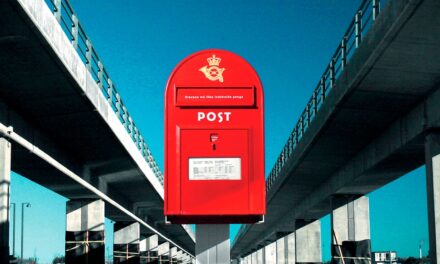
Digital signage used by USPS to spark interest in kiosks
Sometimes, when I speak at conferences, I joke about some of the long-standing traditions we have at the Postal Service: "More than 230 years of tradition unmarred by progress.”
Beyond that self-deprecating attempt at humor, I’m proud to say that there has been significant progress over the years – from simple innovations like self-adhesive stamps and flat-rate priority mail boxes to more complex ones like automated mail sorting and printing postage online.
The Postal Service also has made progress with the testing and deployment of large, complex communication networks. In 1996, we introduced Postal Vision, an employee communications network that now is integrated with our USPS-TV network. As an “early adopter” of digital signage, we began testing the impact of digital vs. static menu boards in retail lobbies in 1999. And in 2003, we laid the groundwork for a test of digital signage that began in selected post offices in 2004 – The Post Office Channel. This third effort took advantage of the advances that had taken place in a growing medium including content delivery methods and the declining costs of technology.
One of our challenges is to improve the customer experience in more than 32,000 retail locations. Digital signage can have a positive impact on the retail environment in several ways. One opportunity is to increase the range of information available to customers while they are waiting to be served. The Post Office Channel features product and service messages to educate and inform retail customers. For example, one message compares the product features of overnight express mail and two-to-three-day priority mail. Another compares delivery confirmation to signature confirmation and shows which form to use depending on which service the customer chooses.
A second opportunity is to redirect customers and actually change customer behavior. Part of the long-standing tradition of how customers behave in our retail space is that many are totally focused on getting in the full-service queue and getting served as quickly as possible. That sounds reasonable.
But what if there are 10 people in line and all you need are some stamps? Can digital signage help change customer behavior and redirect them to the Automated Postal Center (APC), a fully automated kiosk that not only sells stamps but also allows customers to mail packages?
We focused on changing this customer behavior specifically by including a digital screen at the main entrance to each of the test sites. Nicknamed the “Stop and Turn” device, it is a 30-inch screen hung portrait fashion in a custom mount. The content on this screen is all very short (3-5 seconds), bright colors, and designed to catch the eye of customers as they walk into the post office. It’s also very direct in its messages. “Jump the line. Ship packages at the APC.” Or, “Get out of line. Buy stamps at vending.”
In addition to 2,500 APCs, the Postal Service offers 70,000 alternate access locations where customers can buy stamps or mail packages without ever setting foot in a Post Office. This includes supermarkets, drug stores, convenience stores, ATMs and a robust online commerce site at usps.com.
We established four key metrics for our digital signage test: revenue lift in products promoted on the screens, actual and perceived wait time in line, customer satisfaction and shift to alternate access. For the fourth metric, we defined success in three ways:
Re-direct traffic away from full-service
Increase number of customers using self-service options (APCs and vending machines)
Increase awareness and usage of alternate access channels for purchasing stamps and other simple transactions
The shift to alternate access channels was the most successful result in the test. The Post Office Channel had a positive impact on redirecting customers to in-store self-service options. Customers who saw the Stop and Turn screen were more likely to use vending (8.7 percent vs. 6.5 percent) and the APC (7.4 percent vs. 3.4 percent).
We also tracked revenue changes in the test sites as compared to alternate access locations within a five-mile radius. We measured customer awareness of the availability of alternate access locations before we installed the digital signage and again post-installation and found that awareness rose by 22 percent. Revenue from stamp sales declined at the test sites and increased at alternate access locations within the five-mile trade area, indicating that customers were getting the message that they did not have to come to the Post Office to complete a simple transaction such as buying stamps.
Similar findings were reported by the Platt Retail Institute in a February 2008 working paper entitled, “Test Results from a Bank Branch Digital Communications Network.” In this study, ATM use at test branches increased following introduction of digital signage. Customer visits to tellers decreased by 8.3 percent in the test sites as compared to a control group of bank branches without digital signage. Customers who viewed the digital signage messages were more aware of which forms needed to be completed and what type of identification was required, thus decreasing wait time in line and improving teller productivity.
Our research results are consistent with this bank-based study. Digital signage can have an impact on changing ingrained customer behavior. And the Postal Service will continue to innovate and make progress in the years to come.
Margot A. Myers is the manager of retail in-store programs for the U.S. Postal Service.









